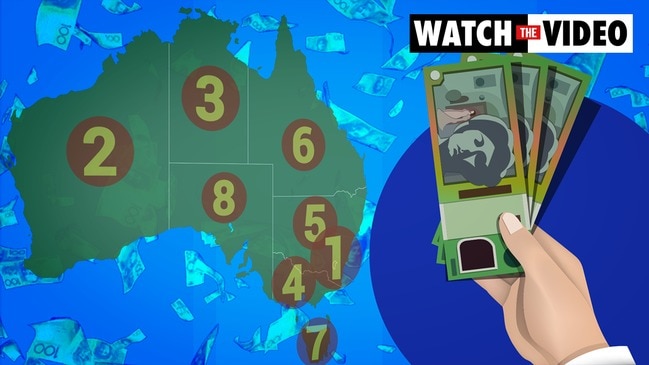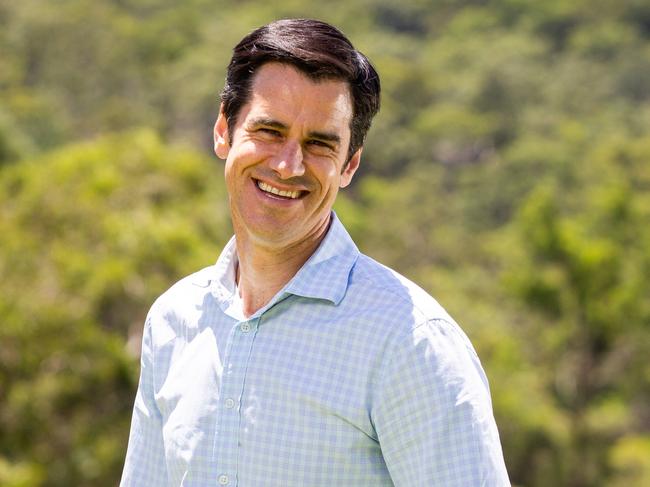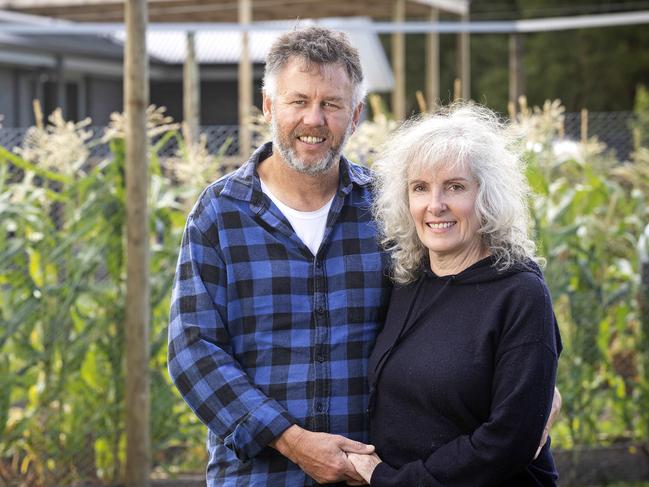Tasmanian salaries revealed: What you should be earning
City workers usually earn more than those in the regions, but Tassie is still fighting to keep up with the wages on the mainland. Check your postcode and see the average salaries nearby.

Tasmania
Don't miss out on the headlines from Tasmania. Followed categories will be added to My News.
Capital city workers typically out-earn their regional counterparts but Australia’s new-found acceptance of remote work may be closing the gap.
Latest figures from the Australian Bureau of Statistics revealed the median full-time salary in Greater Hobart was $1386 a week ($72,100 a year) compared to $1250 a week ($65,000 a year) across the rest of Tasmania.
Demographer and social researcher Mark McCrindle said a trend of Australians moving away from capital cities could have an interesting affect on salaries.
ABS figures revealed capital cities had a net loss of 11,200 people in the September 2020 quarter from internal migration – the largest quarterly net loss on record.
That included a net loss of 30 people leaving Hobart for other parts of Tasmania.

“One of the great upsides of COVID has been this ability to decouple work from location and open up lifestyle possibilities we never had,” Mr McCrindle said.
“People are finding they can head a bit further out and they can get breathing space on the mortgage and get more for less – and the lifestyle is there as well.
“What we now have, and it’s really now the first time we have had it, is people moving to the regions but on capital city salaries.
“They are taking the job with them to the new location and that is giving them an extra financial springboard – lower costs but maintained earnings.
“It will also raise up the earnings of others in their regional areas.
“They can spend more so it’s a boom for the regional economies.”
The top-earning postcode area in the state, according to the latest Australian Taxation Office data from 2017-18, was the mining town of Rosebery with an average yearly wage across full time and part-time workers of $85,844.
It was followed by Sandy Bay at $85,272, Dynnyrne at $74,781 and Taroona/Bonnet Hill at $74,016.
At the other end of the spectrum, Tasmania’s lowest earners were in Taranna averaging $43,068, Branxholm/Warrentinna averaging $43,604 and Derby/Gladstone/Pioneer/Ansons Bay/Musselroe Bay averaging $44,992.
SYDNEYSIDERS LEAVES THE BIG SMOKE BEHIND
A long time dream has become reality for Sydneysider Tiffany Hutton, who has taken up remote working arrangements and left the big smoke to pursue a quiet life at Cygnet, 45 minutes south of Hobart.
Ms Hutton made the move to the sleepy southern town in mid 2020 with her husband John Blanchette as more city dwellers take the plunge into rural living.
“I’ve been planning it for a while,” Ms Hutton said.
“Friends of mine have been here for about 16 years so I’ve been coming down regularly.”

The couple lived in inner west Sydney, with Ms Hutton working in superannuation in the city and John holding a senior public service role.
Now, the pair are building a small simple house beside the Huon River after Mr Blanchette took a redundancy and Ms Hutton set up a home office.
“I like the scenery, the combination of countryside and hills and water,” Tiffany said.
“Everything’s a bit slower.”
The 53-year-old said temporarily renting in Cygnet while building their home had gone well so far despite being an adjustment for the couple.
She said their orchard already boasted apple trees, apricots, plums, figs, pomegranates and other fruit plants.
“I sometimes feel a bit conflicted because I know that Sydneysiders coming down with money, not that I have any, but we are helping push up prices. That makes it harder for locals to afford somewhere they grew up.
“But we know our neighbours, we make an effort to be part of the community – people are by and large incredibly welcoming.”
Mr McCrindle, principal of research company McCrindle, said several factors led to the current difference in salary between metropolitan and regional areas but a major driver was the mix of roles in each.
For example, highly-paid chief executives and general managers were typically at company headquarters in the capitals, while field officers were in the regions.
A survey of more than 1000 Australian office workers last year by software company Citrix found, however, perceptions of cities were changing.
Only a third of respondents (33 per cent) now saw big city living as beneficial to their career opportunities, down from almost half (49 per cent) before the pandemic and subsequent lockdowns.
More than two in five (44 per cent) said they had either abandoned their city dwelling or planned to do so because they could now work remotely.
Citrix field chief technology officer for Asia Pacific and Japan Safi Obeidullah said remote work was here to stay in one form or another.
“The genie is out of the bottle now,” he said.
“We are seeing most people are looking to retain remote working as part of their working practice.
“It could be full time or hybrid (so) in some cases, don’t go too far, you may need to come into the office on a semi-regular basis so that’s something to keep in mind.”
Australia’s highest median full-time salaries were in the ACT ($1650 a week) and Greater Perth ($1643) while the lowest medians were in Tasmania excluding Hobart ($1250) and Greater Adelaide ($1284).
More Coverage
Originally published as Tasmanian salaries revealed: What you should be earning




